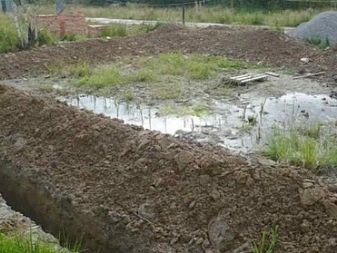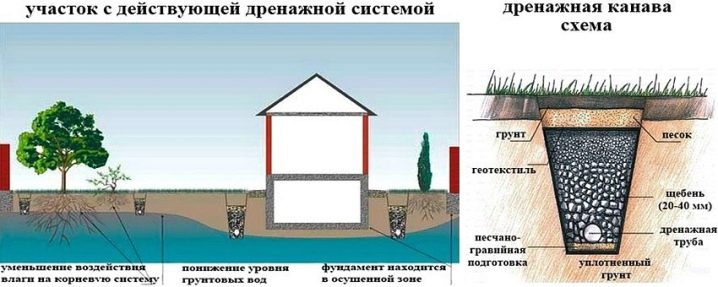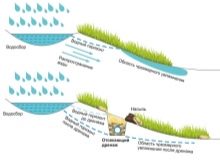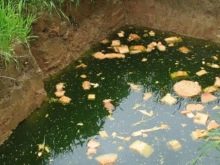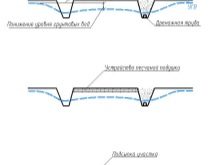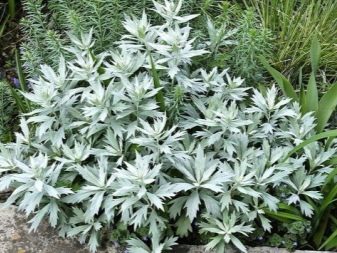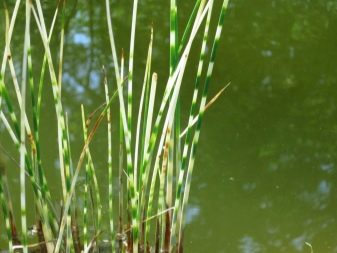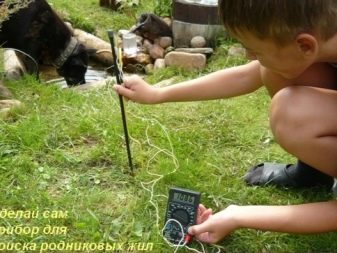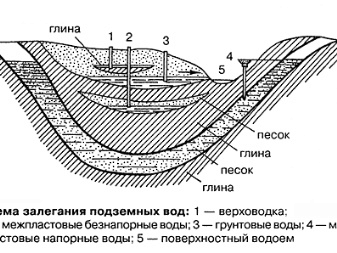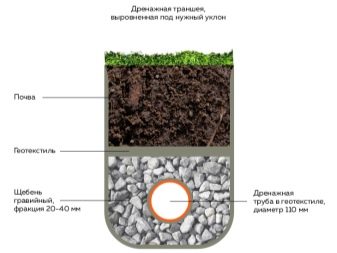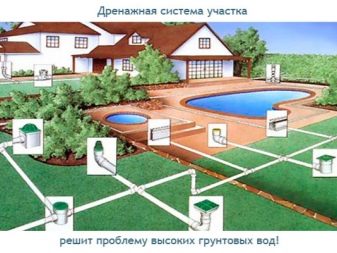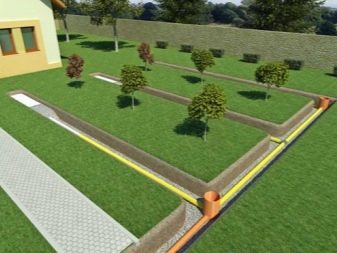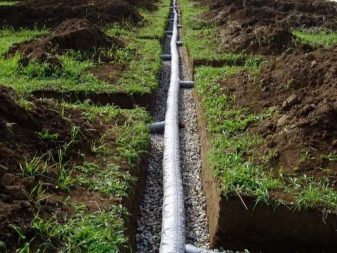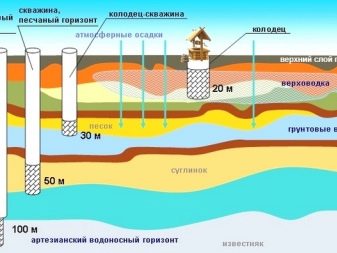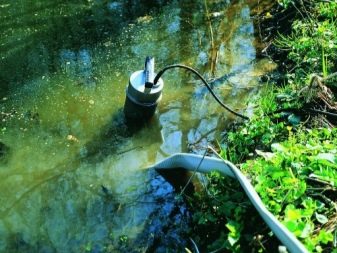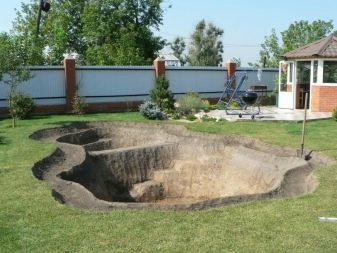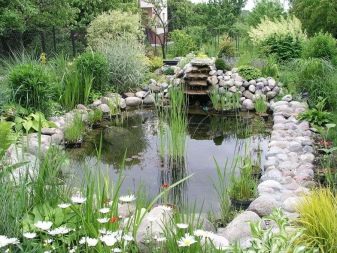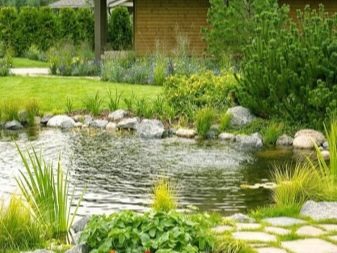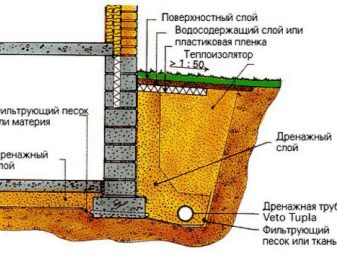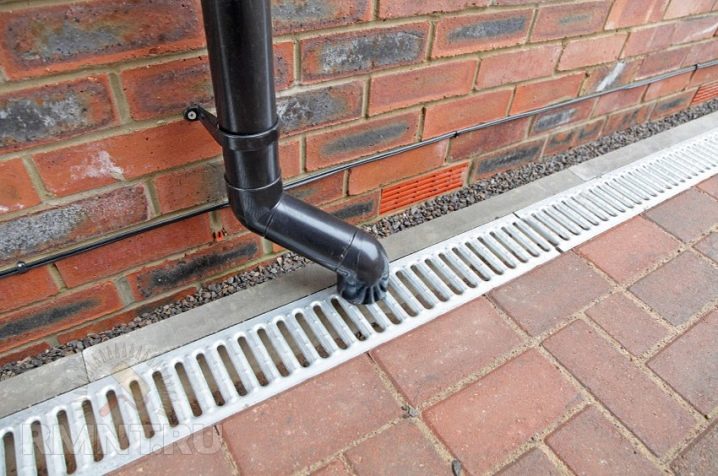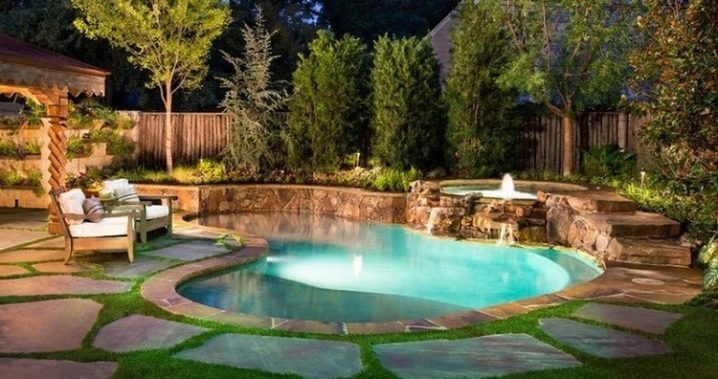Groundwater on the site: how to find out and lower the level?
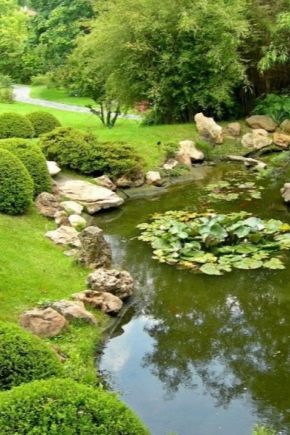
Groundwater is called the underground line, under which is located the aquifer formed after heavy rain or melted snow. The name includes all types of these waters, located below the surface of the earth or the bottom of a reservoir. This phenomenon has a seasonal nature and is manifested under certain weather conditions. With frequent and strong changes in the level of ground moisture, the threat to the owners of the house increases tenfold. This represents a high danger not only for the owners, but also for the agriculture of this plot - vegetable garden and livestock.
Before starting the construction, experts examine the depth of these waters, its main characteristics.
Features and types of HB
The thickness of their reservoir is relatively small, and the depth is usually not more than 3 meters. The layers are separated by a stone layer.
At the moment there are several types of groundwater.
- Top water. This type is usually found at a shallow depth, and it can disappear in very cold or very hot weather, that is, it changes throughout the year.
- Free-flow layer of water. This water layer depends on the precipitation. It can be both high and low. Depth does not change, there is no head. They are able to slow down the construction work, they depend on each other directly.
- Artesian groundwater flow. They are located in the gap between impermeable soil layers.
What matters?
The importance of groundwater is very high and often underestimated. In drylands, they play the role of fresh water supply, they can be used for agricultural or industrial needs, as well as for irrigation. They emit thermal energy that can be used to heat the site, the greenhouse, and even to receive electricity.In addition, they contain a huge amount of various chemicals needed in various industries and industries.
Groundwater is widely used in modern medicine, as they can cure a lot of diseases. However, at the moment, it can be noted that the sources of these waters are highly depleted and polluted by domestic sewage, and this has a bad effect on the life of nature and man as a whole.
But to have these waters on the site is not very good, since their presence significantly slows down construction work.
Methods of determination
In many villages and towns still use columns and wells. To extract this water, check the depth. Professional workers who have special technical devices, for example, a surveyor, will help her to learn it, without which this work will be carried out many times longer and harder.
Ordinary locals can do it without the help of professionals - on their own. There are several simple ways to check the depth of groundwater.
Plants
Our beloved flora is a good way to find out if there is water nearby. For a start, you should carefully look around, look at the terrain for the presence of plants, determine their appearance.For example, reed growing on the site says that the depth here is from 1 to 3 meters, cattail - 1 meter, wormwood - 3-5, and licorice - no more than 5.
If the water is not too deep, the grass will be very bright and saturated color, and if it is deep, the opposite. A soil filled with moisture and precipitation can be recognized by the currants growing on it, the rest of the plants and berries. Many also estimate the humidity of trees growing nearby. If more than three trees are tilted in one direction, then we can safely say that there is a high aquifer under them.
Vine
This is never a failing way. A vine is a branch with a fork at the end. In a place where there is water, it will surely falter. Many people prefer a wire arrow to the vine.
Ring
A simple and simple device - the so-called ring. You can get this device: for this you need 4 nails of 200 mm each, a battery designed for a flashlight, a wire, a voltmeter. Above the required area, it is necessary to score 2 nails with a certain gap. Next, attach the battery. This is done using wire.
Not forgetting about the nails, they drive in two more, to which they subsequently attach a voltmeter. In the area with groundwater, the conductivity will increase.In addition to the above, there are many other methods of determination. But these are the most economical.
You can also use the method to help solve this problem by examining nearby territory, namely: inspect for the presence of wells. Each well has a concrete mark on the bottom, and each villager has a drill. So, at the bottom of the well, you can create a well, using this drill, and then watch how long the water will begin to flow.
An increase in the water level indicates that the level of these groundwaters increases after rainy weather. If there is no water, then there will be no malfunctions during construction and should not be.
However, in such a difficult matter it is better to take the help of experts.
Ways of lowering
In the case when the occurrence of groundwater is too high, it is possible to arrange an artificial water decrease. In this case, a great assistant will be drainage.
Collector
At a certain depth of the soil, filled with water, pave the collector.
Divided into ordinary and asbestos-cement. Inside these pipes they make cuts, the width of which is 1 mm, and the length - 3-5 cm.They are covered with clay, which is distinguished by its plasticity.
Bore holes
Frequent use of boreholes. They are used during construction to drain the built-up area for a certain period of time. This method is very good in that it can remove a significant amount of moisture from the ground, and not weaken the base of nearby buildings.
However, a lot of equipment is useful for this, that is, drilling rigs, pumps and much more. This action proposes to create a funnel-shaped surface with a slope of the location of the submersible pump.
The size of the funnel depends on how long the unit is in operation. Then this process is stabilized, and all liquid is completely removed for the remaining construction time.
Water
One of the most ancient solutions to this problem is ponds at the end of the building or in the center. They play various important roles. This can be either a lowering of the water level or protection from flooding of important areas of the building. This option is practical in that by applying it, you can reduce the level economically and wisely.
But even here there are some minor problems, such as combining with a small and large pool in the front garden and in the area under the estate; not every locality is suitable for these actions.
Homestead is needed for a comfortable pastime. There are benches, footpaths, flower beds, flowers, so there is no need for extra moisture. If a huge amount of liquid accumulates in some parts of the house, a pool is placed in the front garden. Install at the base of the house. This device allows you to reduce the amount of water as soon as possible removes precipitation, this action protects the building from leaking excess moisture.
Type of construction is absolutely any, it all depends on the imagination of the developer. If the action done above did not give any changes, then the same pool is installed on the estate. Carefully looking at the ground, the specialist determines, then sets the place where the fluid will come from.
Installing a pool, we must not forget about the removal of precipitation from the roof. But still moisture should be removed in a cell with a coating, and ordinary pools. Do not forget that they need to lay the slabs and clay, sprinkled with straw.Without this, many people make this layer of ruberoid or roofing material. The pool, that is, its bottom, is coated with a layer of bitumen, and later with another layer of tar. In order to cut it smoothly, the weed edges are removed behind the pond parts, then pruned.
Next, mask the parapet stone, and most often with an iron board. In small pools, the ends of pieces of roofing are best removed under a concrete slab laid on a cement-sand mortar.
Creative summer residents connect their imagination and construct such pools from old improvised parts. Huge cylindrical barrels and baby bathtubs that have long outlived their lives also come into play. Arrangement of accumulation basins is certainly the best solution to this problem of sediment accumulation in the soil. Pools not only perform this wonderful accumulative function, but also significantly improve the appearance of the estate. All this looks just awesome, and many important functions are performed.
On a hot summer day, a good swim in this pool and invite friends. Around him you can set the scenery, sun loungers and sculptures. Plants will also not be superfluous, and the appearance as a whole will complement the appearance of the entire structure, and possibly improve mood.
But to solve this problem alone is very inappropriate, because you can make a lot of serious mistakes. It is best to go to the building department of the local administration in advance for copying.
You can well save on the drainage area. And you can count on the help of specialists who can do the work correctly and without errors. After all, it is better to learn from the mistakes of others than from your own.
Significant - do not skimp on quality materials. Any mistake can reduce all work to zero, which means that all these tasks must be approached with a mind and a sober head.
In the next video, we follow the details of the site’s drainage works together with the landscape architect Alexei Korovin.

